Your students have probably seen clocks everywhere… but do they know how to tell what time it is? Telling time to the hour and half hour is part of the required math curriculum in first grade. There are so many easy and fun ways to incorporate this concept into your lesson plans for your first graders!
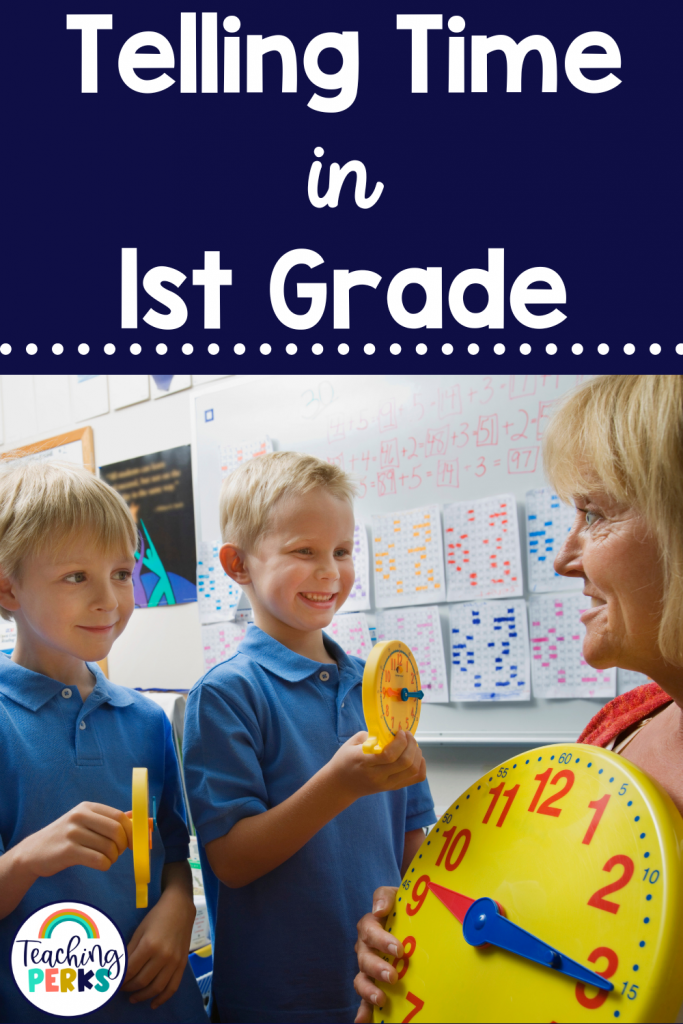
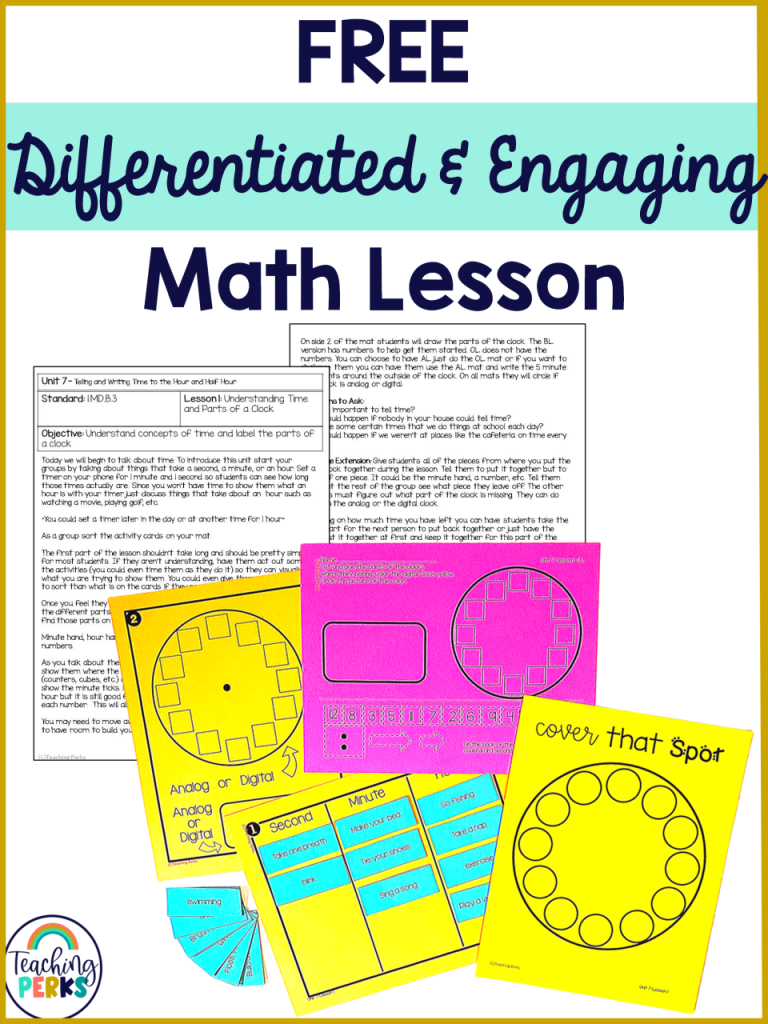
Get Students Familiar With Clocks
Most people use a digital clock on their phones or alarm clocks to tell time. However, being able to decipher an analog clock is still important! To help students recognize different types of clocks and how they all say the same time, you can bring in different examples to examine the parts of a clock, such as the big hand and small hand and the face of the clock. Explain that the numbers on a clock help you tell what time it is and point out the numbers on both a digital and analog clock.
Because the focus for first-grade students is to learn telling time to the hour and half hour, you can keep this discussion very basic. Explaining what the hour hand and minute hand do and how they count the time is really important first step for visual learners!
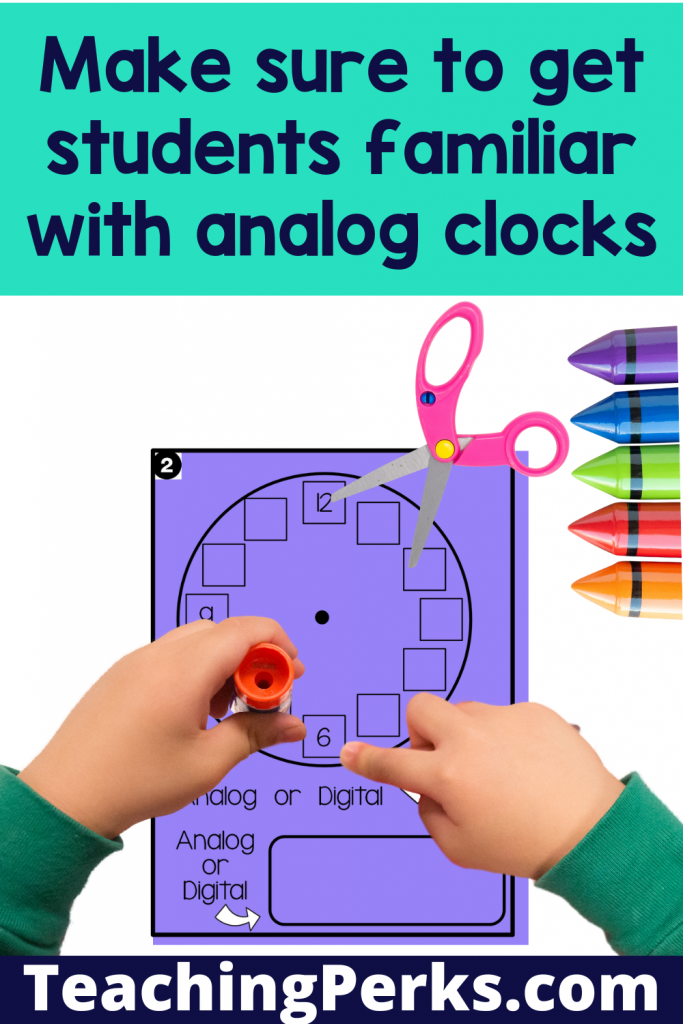
It would also be helpful to bring up clocks throughout the day, even when you aren’t specifically teaching math. For example, you can explain to your students how you start reading where the minute hand points at 9, math at 10, lunch at 11, science at 12, or whatever your schedule looks like. Then, when it’s time for lunch (before the bell rings), you could have students look at the clock and ask them what time it is based on the short hand and long hand! This will help them get used to clocks and how they change throughout the day. See if they can keep track of the time to see when the next hour hits!
Activities for Telling Time to the Hour and Half Hour
As always, learning as a class, in small groups, and individual practice should be fun!
Teaching about clocks and telling time is an excellent opportunity to have your students “act out” the time on the clock. For example, you can draw a clock face on the board or get out a clock that you can easily change the time on for students to visualize. Make sure that there are numbers on the clock the students can see! Then, write down a time on the board (for example, 3:00). Next, have students “act out” with their arms what the clock hands would look like at 3:00. You can measure student’s understanding of this activity very easily by glancing around the room or in your small group to see what each students’ answer was.
One fun activity is taking plastic easter eggs and writing out a time on one side (either in words or numbers) and drawing an analog (or digital) clock with the same time on the other half. Then, give students the broken-up pieces and have them put together the eggs by matching up the correct time!
Another game I love using in small groups is “Cover the Time.” Students get a page with different times on it as well as their corresponding analog pictures. They then roll a dice and move a marker that many spaces on the board. Whichever digital time they land on, they then have the cover the same analog time on their paper! This game is easy to put together and is a great small-group practice. You can get this game and tons of other activities and lessons for telling time to the hour and half hour in my telling time bundle!
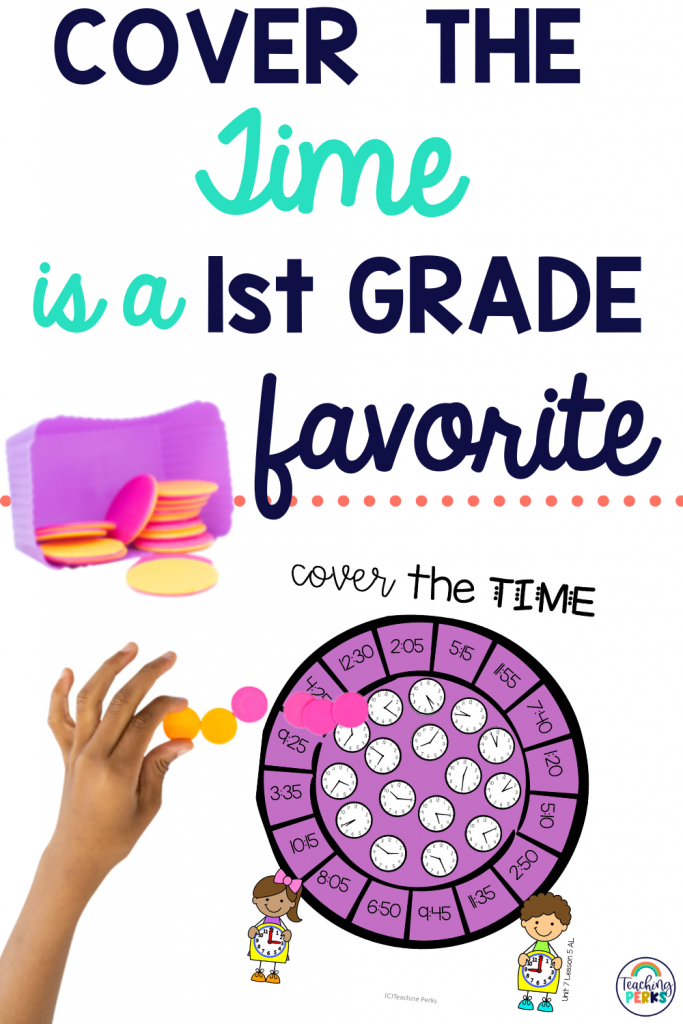
Books That Teach Telling Time
There are so many books that teach telling time to the hour and half hour! Here are some different ways to incorporate stories into your math lesson:
Telling Time with Big Mama Cat
This is a fun story that follows a cat’s daily routine. It even includes a clock with plastic hands that students can move! This would be a great story for a small group. As you read through, a fun way to practice time would be to have students take turns changing the parts of the clock to match the story. You could also hand out student clocks to have them follow along as you read.
A Second is a Hiccup
This story is a great introduction to the concept of “time”. Helping students understand how long each increment of time is can make it easier for them to grasp the concept of telling time to the hour and half hour!
What Time is it, Mr. Crocodile?
This fun book follows a crocodile with a plan to eat a bunch of monkeys. As he goes through his day, each time is shown as well as what he is doing! But of course, by the end, everything ends up working out for the monkeys.

Differentiated Activities for Telling Time
One of the most important things you can do as a teacher is work with students at the level they are at. This is why I love using differentiated small groups when teaching kids!
For example, some students may need additional support learning these math skills. Reviewing addition and subtraction and comparing numbers might help students grasp telling time as they get more comfortable working with numbers. Or, they may need to spend more time working with practice clocks or understanding the concept of time (like in the story A Second is a Hiccup).
However, you might also have students who really excel at this concept and need to be challenged. You could increase the difficulty of this concept by teaching them how each number actually means something different for a minute hand and have them practice adding or subtracting five-minute intervals from an hour or half-hour clock!
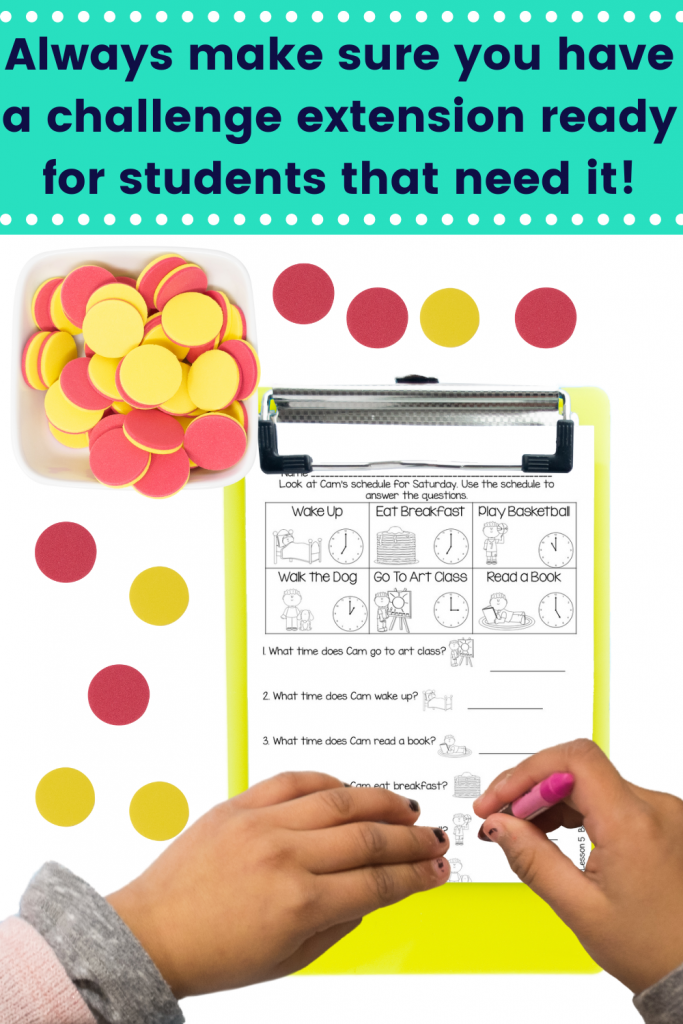
Overall, creating activities that help your students understand telling time to the hour and half hour can help them get practice with this concept that they will use every single day!
If you want a set of lesson plans, time worksheets, and activities for teaching time to your students with minimal prep on your part, head to my Teachers Pay Teachers store and grab the Telling Time to the Hour and Half Hour bundle!
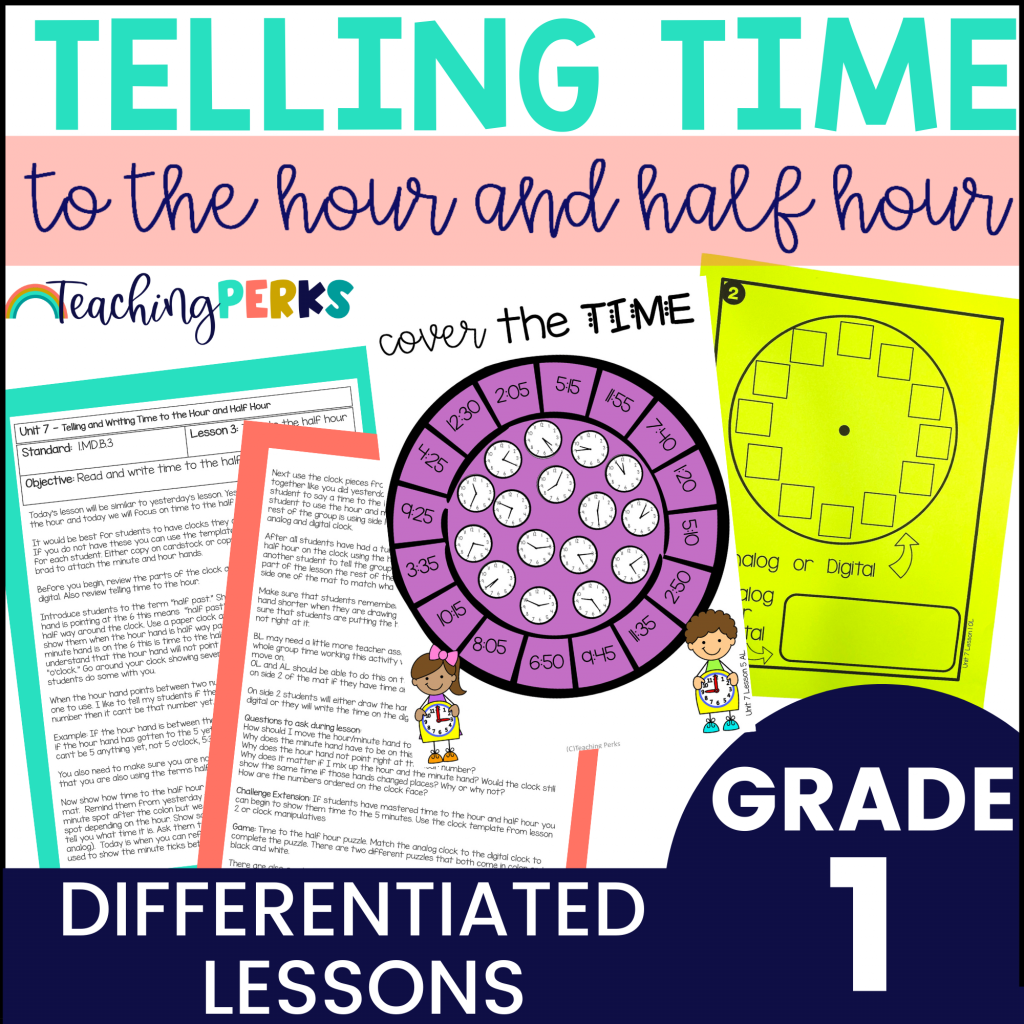
Don’t forget to subscribe to the blog for more tips on teaching math in 1st grade!
[…] Want some more math ideas for 1st grade? Check out this post on Telling Time by the Hour and Half Hour! […]